Feels good but a lot harder than FS 50-50.
This time, we are talking about BS 50-50.
Even when you know how to ollie and bs 180, sometimes you can't lock in to the right place.
In my case, I sometimes land them like feeble, boardslide, wheelie, or sometimes I totally missed the ledge.
In this series, we'll study why those problems happen according to the laws of physics using 3D models as usual. Although I may not be good at ledge skating, I believe there are things not good skaters such as myself can tell.
Summary
Above all, locking in is the biggest problem.
Can't lock in, can't hold grind, can't pop out... Among all those problems, locking in seems to be the biggest problem. Time it right and you might be able to solve that problem.
Hold your posture for a short duration of time.
When you crouch down, you gain downward momentum. Such energy pushes your body down and makes it hard to get on a ledge. To avoid fighting it, just keep your posture for a short duration of time and let joints and muscles of your body absorb/convert such energy into heat.
Jump up sooner if skating a higher ledge.
If you are skating a higher ledge, you need to utilize the downward momentum to tighten your muscles so you can jump up higher. To do so, you should jump up as soon as you crouch down and avoid letting your body absorb the energy.
Simulation
Hit the icon to initiate 3d simulation.
What is backside 50-50?
Obstacle behind, lock in with both trucks.
A bs 5050 is one fascinating feeling trick where you approach an object that's behind you and lock in to it with both of your trucks.
The feeling of the "grip" of trucks and the feeling that metal trucks wearing out right below your feet is something that you can't feel in the daily life.
As much as I want everyone to know how it feels like, but this one's a lot harder than FS 5050s and it always comes with problems.

Classification of problems
Above all, locking in is the hardest part
Let's start with a break down of the problems. They can be classified into several types as follows:
- A problem that you can't lock in.
- You may wind up landing like feeble, boardslide or wheelie grind.
- A problem that you can't hold the grind.
- This is when you have to step off to the heel side.
- Or you wind up getting off the ledge sooner than you want.
- A problem that you can't pop out properly.
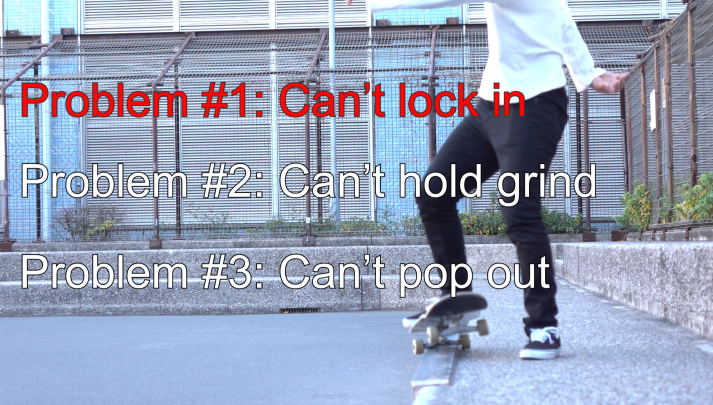
Approach to solution
Let's think thinking backward.
Now that we know the symptoms, let's also talk about the solutions. We will just focus on one thing this time: the timing. I think this is one of the most crucial parts comes to proper locking in.
And since we are talking about time, let's try something radical and think backward.
Imagine this is when you are grinding. This time, rather than talking about how to do it from the beginning, let's reverse the process and try to think what it takes to get here.
By doing this, I think it's going to be easier to sort out problems in a sequence.
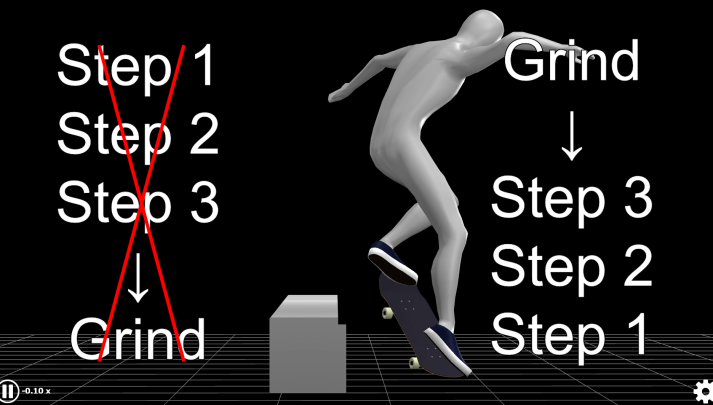
Where does your body have to be?
By the time you grind, your body has to be at the right place over the ledge. This posture and the weight distribution may vary depending on your speed and approach angle so let's just say it should be somewhere around HERE.
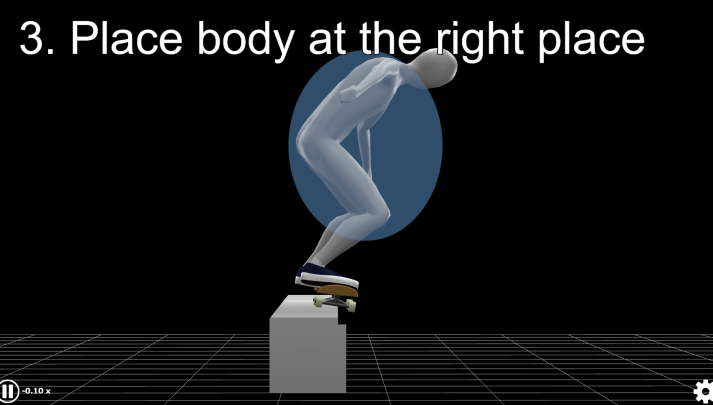
How to get your body at the right place?
Next, for your body to be able to be here, obviously, you have to jump and pop at some point in time. And this process has to be done in a way that it helps us form this posture, which we are going to talk about in a moment.

What to do before popping?
And to pop, if we further go back in time, first have to crouch down.

Cause of problem
Connection between steps.
OK now we know what it takes to make this trick.
- To grind, our bodies have to be at the right place.
- To do that, we have to pop properly.
- To pop, we have to crouch down.
Let's also think about how they are connected to each other.
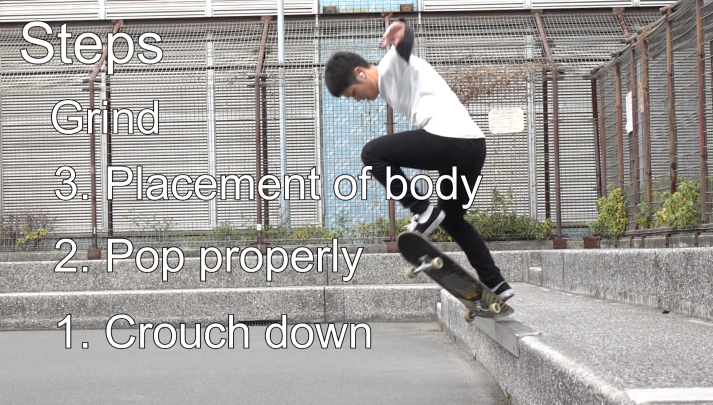
Everything's at the beginning
In fact, the most important part is in the beginning.
As you crouch down, your body gains downward momentum, which pushes your entire body downward, making it harder to jump up.
If you try to pop at the same time, that downward momentum generated by your body going down and the upward momentum generated by the pop will squash your legs.
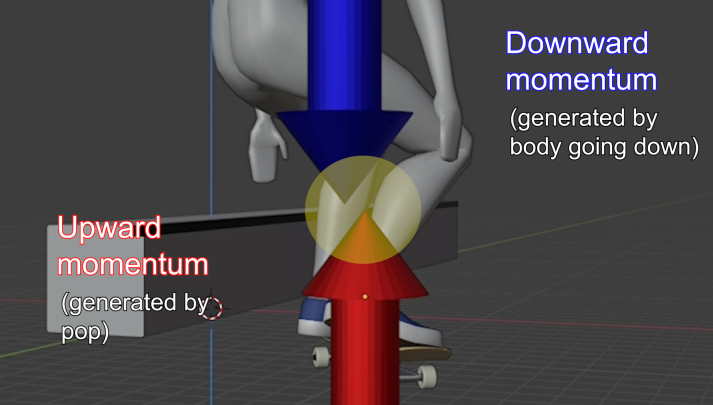
Consequence of not being able to secure enough time
As a result, no matter how hard you try to pop, you simply can't lift up your body high enough because of the timing.
And since you don't have enough time in the air, you can't adjust the angle of your board effectively, and you may land either feeble or boardslide.
In other words, if you don't time the step #1 properly, both #2 and 3 will not happen.
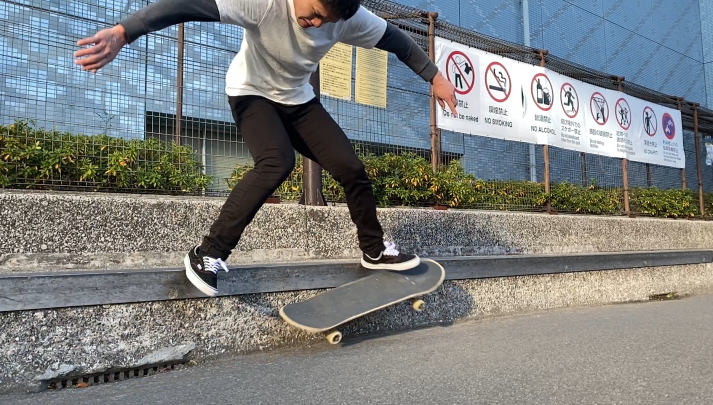
Solution
What to do?
OK, so what can we do to avoid this? Just jump higher?
It's not wrong. In fact, sometimes you do have to utilize the concept of "squash."
By doing this, you can tighten your muscles so that you can generate even more energy to jump higher.
But in my case, the ledge I'm skating is 30 cm high so I'll be talking about how to get on a similar height of ledge.
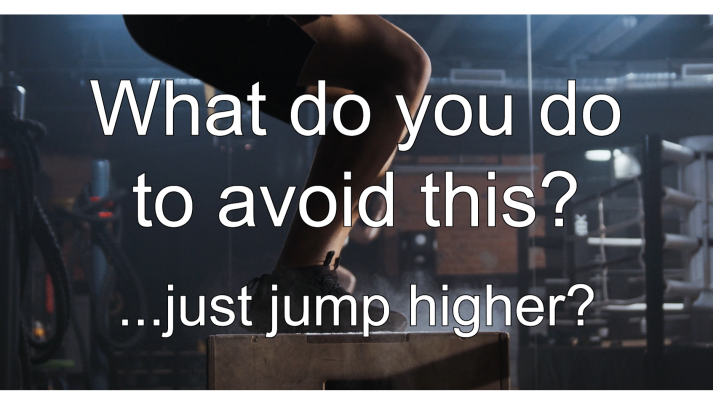
Going against that downward momentum is a main cause
What we need to understand is that that downward momentum doesn't last forever.
Imagine when you fall from a height. As you land, you have to absorb an impact. But that feeling goes away soon, right? Just like that the downward momentum gained by crouching down lasts only for a short duration of time.
This is because joints and muscles of our bodies absorb such energy and convert it into heat.
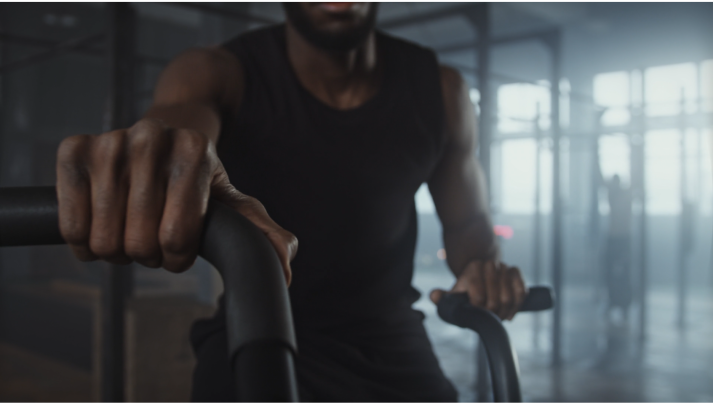
Benefit of keeping the posture low
The point is, we don't have to do all this intentionally. Instead this happens as a reaction of our bodies.
So, if we want to avoid fighting the downward momentum, why don't we just...wait?
In other words, after crouching down, by keeping the posture for a short period of time, you can automatically let your muscles and joints absorb the downward momentum.
By doing that, not only can you disperse the downward energy, you can also stabilize your body axis by being able to jump up with a smaller amount of energy.
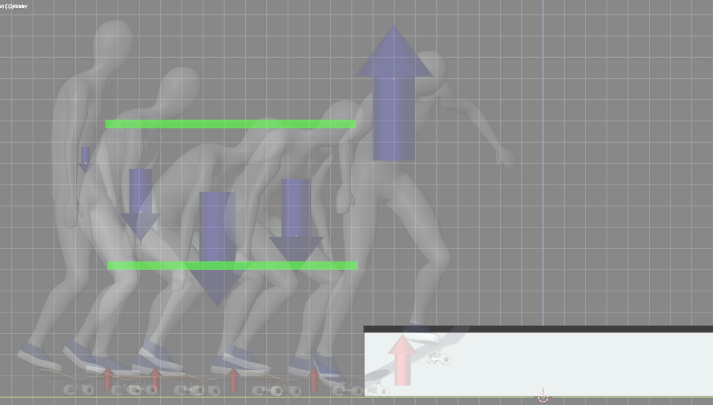
Execution
What to do?
In addition to this concept, always keep in mind the difference between the functions of your thighs and calves.
Pops are done by calves, which is NOT strong enough to lift up your body. Instead it is your thighs that plays the roll.
So make sure to focus on stretching out your legs first, and pop after that.

Tips
Let's study the trick further in detail.
Proceed from the links below.
Trouble Shooting
Let's study the trick further in detail.
Proceed from the links below.



 Convert your video into 3D
Convert your video into 3D Facebook
Facebook Twitter
Twitter




